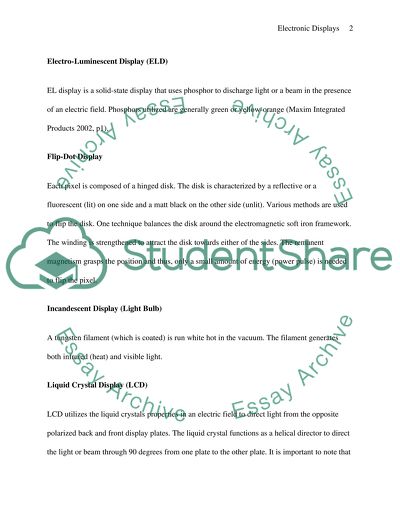Cite this document
(“Electronic Displays Essay Example | Topics and Well Written Essays - 2000 words”, n.d.)
Electronic Displays Essay Example | Topics and Well Written Essays - 2000 words. Retrieved from https://studentshare.org/design-technology/1441198-electronic-displays
Electronic Displays Essay Example | Topics and Well Written Essays - 2000 words. Retrieved from https://studentshare.org/design-technology/1441198-electronic-displays
(Electronic Displays Essay Example | Topics and Well Written Essays - 2000 Words)
Electronic Displays Essay Example | Topics and Well Written Essays - 2000 Words. https://studentshare.org/design-technology/1441198-electronic-displays.
Electronic Displays Essay Example | Topics and Well Written Essays - 2000 Words. https://studentshare.org/design-technology/1441198-electronic-displays.
“Electronic Displays Essay Example | Topics and Well Written Essays - 2000 Words”, n.d. https://studentshare.org/design-technology/1441198-electronic-displays.


